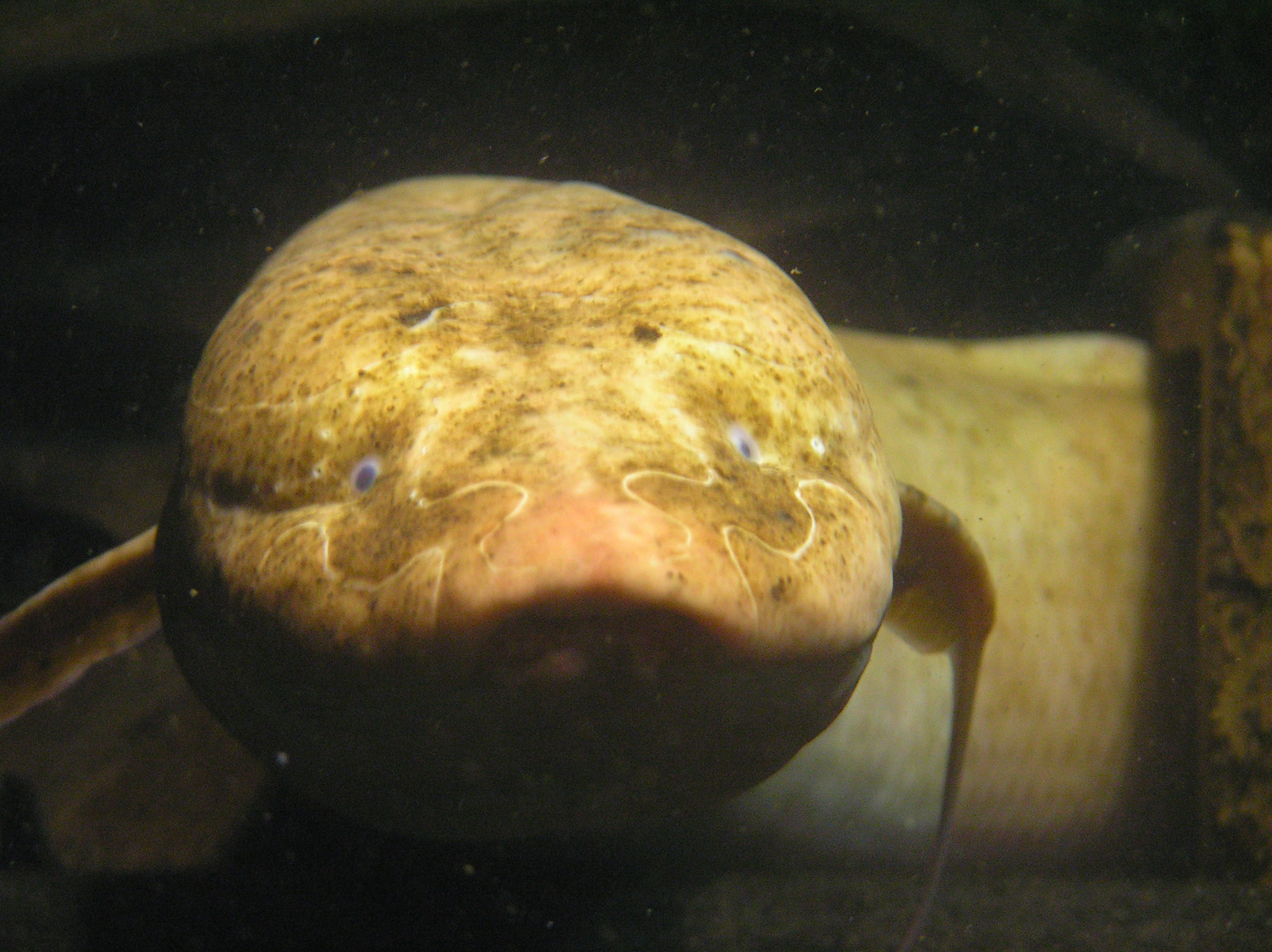- Protopterus
Taxobox
name = African lungfish

image_width = 250px
image_caption = "Protopterus "
regnum =Animal ia
phylum = Chordata
subphylum = Vertebrata
classis =Sarcopterygii
subclassis = Dipnoi
ordo = Lepidosireniformes
familia = Protopteridae
genus = "Protopterus"
subdivision_ranks = Species
subdivision = See text.The African lungfish are the genus "Protopterus" and constitute the four species oflungfish found inAfrica . "Protopterus" is the sole genus in the family Protopteridae.pecies and subspecies
* "
Protopterus aethiopicus " (Heckel, 1851) - Marbled lungfish
** "Protopterus aethiopicus aethiopicus"
** "Protopterus aethiopicus congicus"
** "Protopterus aethiopicus mesmaekersi"
* "Protopterus amphibius " (Peters, 1844) - East African lungfish
* "Protopterus annectens " (Owen, 1839) - African lungfish
** "Protopterus annectens annectens"
** "Protopterus annectens brieni"
* "Protopterus dolloi " (Boulenger, 1900) - Slender lungfishDescription
The African lungfish are obligate air breathers. They generally inhabit shallow waters such as swamps and marshes, however they also found in larger lakes such as
Lake Victoria . The African mudfish, or lungfish, can live out of water for many months in its burrow of hardened mud beneath a dried-up stream bed. Native Africans have been found to dig it up, burrow and all, and store it for later use when they want fresh fish to eat. These fish have also been carried in their mud burrows for exhibition in the United States. They have a rather snake-like appearance and a strong taste. Kees "et al.", 2002 mentions that the taste is such that it "is locally either highly appreciated or strongly disliked." As technology advancements such as longlines and gillnets have been increasingly applied in the Lake over the past fifty years, it is believed that the lungfish populations there are decreasing.The African lungfish is an example of how the evolutionary transition from breathing water to breathing air happens. Lungfish are periodically exposed to water with low oxygen content or situations into which their aquatic environment dries up. Their adaptation for dealing with these conditions is an outpocketing of the gut that serves as a lung. The lung contains many thin-walled blood vessels, so blood flowing through those vessels can pick up oxygen from air gulped into the lung.
The African Lungfish has two anterior gill arches that retain gills so it can breathe either air or water. The lungfish heart has adaptations that partially separate the flow of blood into its pulmonary and systemic circuits. The lungfish has a partially divided atrium where the left side receives oxygenated blood and the right side receives deoxygenated blood from the other tissues. These two blood streams remain mostly separate as they flow through the ventricle leading to the gill arches. As a result oxygenated blood mostly goes to the anterior gill arches and the deoxygenated blood mostly goes to the posterior arches.
References
* Kees (P. C.) Goudswaard, Frans Witte, Lauren J. Chapman, "Decline of the African lungfish (Protopterus aethiopicus) in Lake Victoria (East Africa)" East African Wild Life Society, African Journal of Ecology, 40, 42-52, 2002
* Purves, Sadava, Orians, Heller, "Life: THe Science of Biology" 7th ed. pg. 943. Courier Companies Inc: USA, 2004.
Wikimedia Foundation. 2010.
